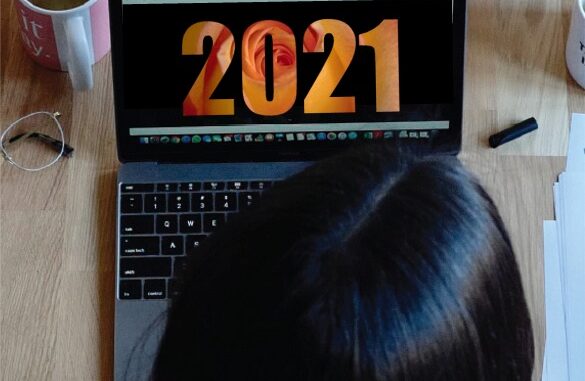
We are all gladly saying goodbye to 2020, and for good reason. There’s guarded optimism looking into 2021, with new vaccines for the virus, along with an expectation that we’ll be moving back toward a “normal” way of living.
But if the last year has taught us anything, it’s that things change, and the ability to adapt is more and more critical. That’s particularly true with digital marketing, where adaptability isn’t new—it’s what naturally happens in a dynamic, developing field.
Digital marketing will the influenced strongly with everything else happening in our society during the next year, and here are some key areas that we’re suggesting clients concentrate on going forward.
Visual Search
The ability to search by image rather than words, has been getting more sophisticated over the last couple of years. Consumers are also catching onto the idea that sometimes a photo or graphic will bring them better search results than just a word or two. Visual search has also become a method for fact checking, particularly with social media. An image in a meme that appears suspect may very well be, and a visual search can spot fakes and impostors, by showing you how the image was used in the past. And for fashion or a number of other businesses, an image of something you like that connects you with similar items—and where you can buy them—is a gold mine.
This means rethinking your imagery and how it’s used to build your business.
Position Zero
For the past few years, SEO emphasis has been on getting positions in the first five listings online. But now, there’s a new Holy Grail—Position Zero.
Position Zero is the listing in a Search Engine Results Page that includes a snippet of information from that site. The reader is immediately exposed to site content, and many—over 30% of desktop and over 60% of mobile searches end with the Position Zero info. Position Zero is particularly important with voice searches, which repeat the snippet listed.
So companies are devoting more search resources into structuring content to get the coveted Position Zero spot—and to provide the content the viewer sees without a single click.
Currently, the two top search words that are most reflected in Position Zero are “recipe” and “best.” Expect other terms to be vying for this position in 2021.
Fun fact: 30% of mothers are more likely to believe product benefit claims if they’re accompanied by a short video. Video adds credibility.
We’ve been preaching this for a while now, and if you don’t have video on your site yet, you really need to think about how to use it—strategically.
Digital Advertising
After shrinking substantially in 2019 because of the pandemic, digital advertising is set to stage a rebound in 2021, with some advantages to marketers. As digital advertising has migrated more and more to Facebook and Google (which combined account for about two thirds of all digital ads), Google and Facebook had invested more in ad optimization, and marketers will have new tools for making their ads more effective going forward. Our staff has already been taking advantage of these new analytics, and we expect them to be even more useful in the coming year.
Geofencing
Geofencing is the ability to deliver a mobile message to a customer or prospect when they’re in direct vicinity of your business. With people traveling and shopping less in 2020, lots of organizations didn’t take advantage of this powerful tool. But think about this—with people taking fewer shopping trips, they’re looking to maximize the effectiveness of each outing. So reaching them when they can visit your store is even more valuable than ever. In 2021, this will still be an issue, so our geofencing strategies can make a big impact.
Interaction
Quizzes, questions, surveys—all help engage your audience and make them connect more strongly with your online presence. Interaction is becoming a useful technique for gaining attention and learning more about prospects and customers. People enjoy the challenge and—especially since they can’t visit with others during the pandemic—appreciate the chance to relate.
A word of warning, though: don’t make your interactive content all about you. People are wary of blatant info-miners. Structure it so that you’re sharing information THEY can use.
Big Data
The continuing expansion of computer power and the ability to rapidly process vast amounts of data will continue to change digital marketing and how we connect with people. Consider this: Target (or other major stores) are likely to know a woman is pregnant before her family does, because of changes in buying habits. But big data does more than profiling; it accelerates product development, market research, and other process that require analysis, so marketers will find they can roll out new products faster.
(Big data also made it possible to develop the COVID vaccines at record speed, helping all of us move toward getting back to normal.
A “New” Normal
And speaking of normal, expect normal to be different as we get back to it. Surveys suggest that people who have been telecommuting aren’t necessarily anxious to get back to going into the office every day, instead preferring a “hybrid” workplace mixing office and home. And many people think that Zoom (or other online platform) meetings are a better alternative than in-person meeting for at least some of the gatherings they replaced this year. Corporate travel policies will likely be different, and people who have invested more in their homes over the last year because they couldn’t travel or eat out may find that cocooning is still enjoyable for more time than they devoted to it in the past.
So, bottom line, more digital interaction. Which means your digital presence—and digital marketing—are more important than ever in the new year.
Happy 2021. RTL Digital Media is looking forward to the challenges of the next trip around the sun, and we stand ready to help you.

Leave a Reply